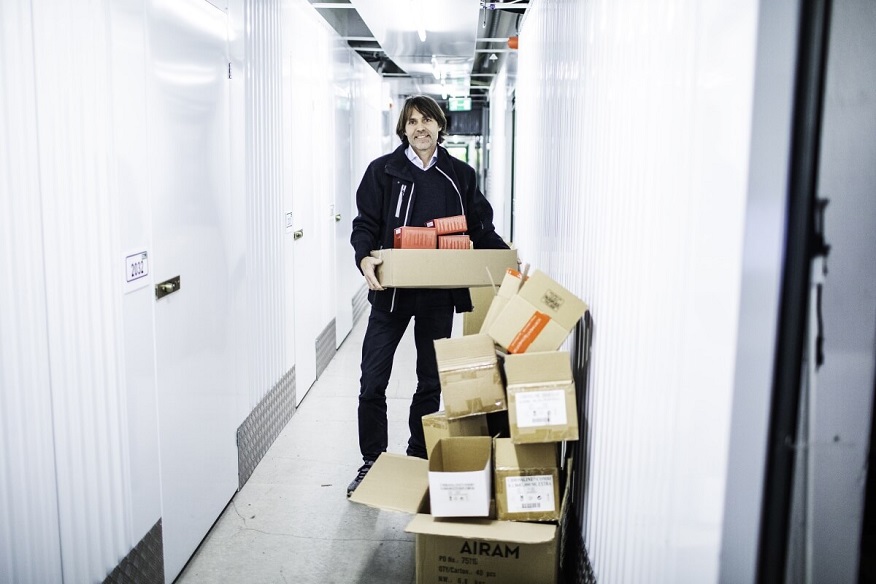Although changes in the mini storage hong kong industry have been slow and easy to identify, it has been a definite evolution. Many of these changes have come due to competition and overbuilding in some areas. This leads back to the old “do your homework” thing. You need to have a strategy if you are to see your dream of owning a self-storage facility come to life.
Some Decisions for Your Strategy
Include Do I build a large facility? Do I build a smaller facility and enlarge in phases? Do I include retail, or specialize in some areas? You need to know the market where you want to build, do your homework, and become familiar with the competition. When planning the design of your facility, consider resisting the temptation of staying with the design of narrow aisles and row after row of doors. The trend is larger buildings with as many units as feasible.
When to Expand?
Enlarge your facility not when you are full, but when stabilized occupancy is achieved. Start, or have a plan for expanding before you reach 80 percent occupancy. When you reach 65 percent, it is time. If your facility is filling up faster than expected, consider expanding when you are at 50 percent capacity. Keep in mind that if a particular unit size is more popular, this unit size offers an excellent opportunity for expansion.
Hopefully, you are not landlocked and over restricted from expansion. If so, consider adding value by adding services such as mailboxes and shipment (FedEx) drop-offs and mail outs. The good thing about adding value is that it can be done in the planning stages of your facility as well as after the facility is complete and fully occupied. Another thought is that if possible, build space that can be modified so unit sizes can be changed to meet market needs. If you are full of one smaller size unit, build walls and add doors if the design allows for this. Or (if the design allows) consider adding insulation to an area and heating, air conditioning and a dehumidification system. This will allow you to rent out climate-controlled units at a higher rate.
When designing and building a new facility, keep in mind that you might have competition move in down the road, therefore, you need to keep adding value. Remember, facilities with climate control will probably stay ahead of the older facilities that don’t offer this benefit. Don’t neglect your property and invest in sprucing it up annually. A property that is maintained and constantly shows value is being watched by potential buyers and renters. Someday you might have an offer you can’t refuse.
-Trends
As the self-storage industry goes through changes, we see trends which raise the level of design in sophistication and modernization. These improvements are becoming more the norm with value-added services.
Some of these include
-Multi-story buildings
-Conversions
-Multi-family buildings
-Condominium-style RV
-Boat storage offering ownership
There is greater profit potential when offering ancillary retail products and secondary services for residential and commercial customers. Services include truck rentals and packaging needs, which may be in high demand. More than 60 percent of self-storage facilities now offer some ancillary services. This is up by more than 50 percent from the year 2001. This type of facility needs to be heavily marketed initially to build walk-in traffic and fostered through, word-of-mouth and high occupancy.
The Army and Air Force Exchange Service (AAFES) are looking at plans to develop on-base self-storage (迷你倉) or portable storage facilities at strategic locations across the United States. This isn’t the first time they have visited this possibility. Consider this possibility if you want to locate a storage facility near a military base.
-Some Dos and Don’ts on How to Avoid Some Mistakes
-The self-storage business requires a personal touch:
Trying to handle everything from a remote location is challenging, but perhaps the biggest stumbling block is overbuilding by uneducated or rash competition. Being too aggressive and not taking enough time to do your homework is a big mistake that reduces profit-ability and resale potential.
-Another mistake that people make is not growing:
When you have the opportunity, and it’s time to expand, act.
-Some of the key ingredients for success are:
Accurately determining demand
Taking a realistic approach to financing
Creating a viable pro forma
Building the right structure
Pre-marketing with care
Hiring the right people
Focusing on an exit strategy up front
During your feasibility study, pay attention to owned land in an area where counties are bordered. This is important as after you have purchased your land and begun construction, a mile down the road in another county, someone else is building a facility.
As for funding, choosing the wrong equity partner can be a critical mistake. Smaller self-storage investors often use friends and family, while larger ones use institutions or individuals with high net worth. You must share the same values and philosophies with an equity partner.
Don’t focus too much effort on getting the most use out of the land and not enough attention to customer convenience. Remember to establish an exit strategy going in. Don’t over market your facility with big claims that you can’t back up. Sending fliers out beyond a range of five miles is a waste unless you are building a condominium style RV and boat storage facility.
Don’t forget to include special offers in your mailers and ads which will allow you to track what is working and what isn’t.
Immediately respond to tenant complaints. Not doing so is very poor word-of-mouth advertising and contributes to a poor reputation. Don’t be defensive or make excuses. Just deal with it.
Perform routine, daily maintenance. Don’t let things slide. Set aside money for annual capital improvements annually. Don’t wait until the last minute to send out bids for things such as snow removal, lawn maintenance, and other services. Perform background investigations on all bidders.

